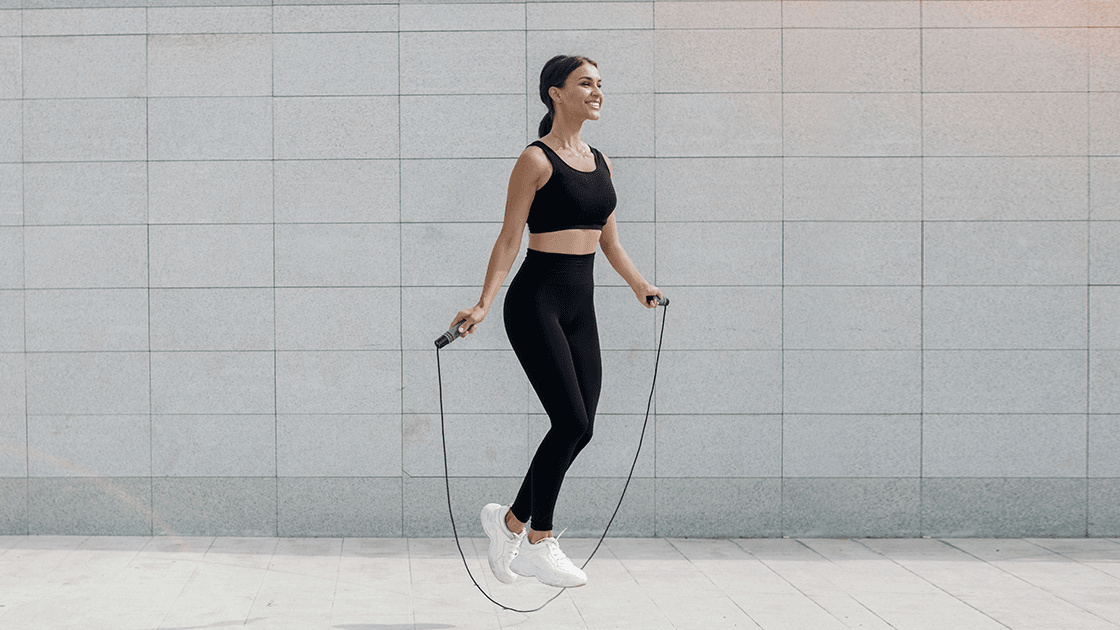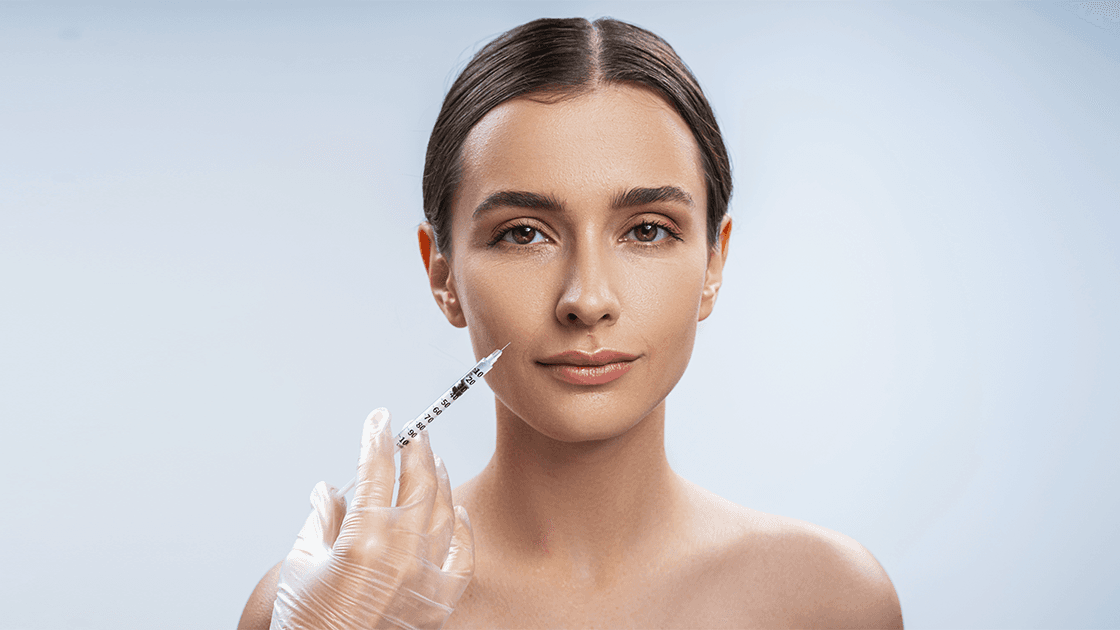1. Introduction: Two Paths to One Goal
In the quest for optimal body composition and aesthetic enhancement, many individuals find themselves choosing between surgical interventions and lifestyle modifications. However, the most effective approach often lies in combining evidence-based treatments with sustainable lifestyle practices. This comprehensive guide explores how laser lipolysis and structured exercise programs work synergistically to achieve superior body contouring results.
1.1 Why Fat Reduction Alone Isn’t Enough
Traditional approaches to fat reduction often focus solely on eliminating adipose tissue without addressing the underlying metabolic factors that contribute to fat accumulation. While targeted fat removal can create immediate aesthetic improvements, maintaining these results requires ongoing metabolic support. The human body’s natural tendency toward homeostasis means that without proper lifestyle modifications, treated areas may experience renewed fat deposition over time. Additionally, localized fat reduction without corresponding muscle development can result in suboptimal body contouring outcomes.
1.2 Introducing Laser Lipolysis
Laser-assisted lipolysis represents a significant advancement in non-invasive body contouring technology. This innovative procedure utilizes specific wavelengths of laser energy, typically 1064nm diode lasers, to target adipocytes through controlled thermal energy delivery. The treatment requires reaching internal temperatures between 48 and 50°C for effective collagen denaturation and subsequent skin tightening, while maintaining safe external temperatures. The photomechanical effect disrupts adipocyte membranes, leading to the release of triglycerides and facilitating natural metabolic clearance of damaged fat cells.
1.3 Why Pairing It with Exercise Makes All the Difference
The synergistic relationship between laser lipolysis and structured exercise programs creates optimal conditions for sustainable body transformation. Exercise enhances lymphatic drainage, accelerates metabolite clearance, and prevents compensatory fat storage in untreated areas. Furthermore, physical activity promotes muscle hypertrophy and improves insulin sensitivity, creating a metabolic environment that supports long-term fat loss maintenance. This combined approach addresses both immediate aesthetic goals and long-term metabolic health, ensuring comprehensive body transformation results.
2. What Is Laser Lipolysis?
Understanding the scientific principles behind laser lipolysis is essential for appreciating its role in comprehensive body contouring strategies. This section explores the technical mechanisms and clinical applications of this advanced aesthetic treatment.
2.1 What Is Laser Lipolysis and How Does It Work?
Laser lipolysis employs coherent light energy to induce selective photothermolysis of adipose tissue. The 1064nm wavelength demonstrates optimal penetration depth and selective absorption by fat cells while minimizing damage to surrounding tissues. During treatment, laser energy is delivered through specialized fiber-optic cannulas or external applicators, depending on the specific technique employed. The photomechanical effect causes rapid heating of intracellular water within adipocytes, leading to membrane disruption and triglyceride release. Subsequently, the body’s natural lymphatic system processes and eliminates the released lipids through hepatic metabolism.
2.2 Key Benefits of Laser Fat Reduction
Laser-assisted lipolysis offers significant advantages as a safe and effective alternative to traditional surgical methods. The non-invasive nature eliminates risks associated with general anesthesia and surgical complications. Simultaneous collagen stimulation through controlled thermal energy promotes dermal remodeling and skin tightening, addressing common concerns about skin laxity following fat reduction. The procedure demonstrates excellent tolerability with minimal downtime, allowing patients to resume normal activities quickly. Additionally, the precision of laser energy delivery enables targeted treatment of specific areas while preserving adjacent tissues and maintaining natural body contours.
2.3 Common Target Areas: Abdomen, Arms, Thighs, and Chin
Laser lipolysis demonstrates particular efficacy in treating areas prone to stubborn fat accumulation that resist traditional diet and exercise interventions. The abdominal region, including both visceral and subcutaneous fat deposits, responds well to laser treatment due to optimal tissue depth and accessibility. Upper extremities, particularly the triceps and forearm areas, benefit from the skin-tightening effects alongside fat reduction. The thigh region, including both anterior and posterior compartments, shows excellent results when treated with appropriate energy parameters. Submental fat reduction has gained popularity for facial contouring, with studies showing significant improvement in jawline definition and profile enhancement.
2.4 Ideal Candidates: Who Should Consider It?
Optimal candidates for laser lipolysis typically present with localized adipose deposits, good skin elasticity, and realistic expectations regarding treatment outcomes. Individuals within 20-30% of their ideal body weight demonstrate the best results, as the procedure is designed for body contouring rather than significant weight loss. Patients should maintain stable weight for at least six months prior to treatment to ensure lasting results. Medical contraindications include pregnancy, active infections, autoimmune conditions affecting wound healing, and certain medications that increase photosensitivity. A thorough consultation with qualified practitioners ensures appropriate candidate selection and optimal treatment planning.
3. Exercise: The Fat-Burning Foundation
Physical activity serves as the cornerstone of sustainable fat loss and metabolic optimization. Understanding exercise physiology principles enhances the effectiveness of combined laser lipolysis and fitness interventions.
3.1 How Physical Activity Affects Fat Metabolism
Exercise induces complex metabolic adaptations that enhance lipolysis and fat oxidation through multiple pathways. Aerobic activity increases catecholamine release, activating hormone-sensitive lipase and promoting triglyceride breakdown within adipocytes. Beta-oxidation pathways become upregulated during sustained physical activity, improving the body’s capacity to utilize fatty acids as fuel. Exercise also enhances insulin sensitivity, reducing lipogenesis and promoting preferential fat utilization over carbohydrate stores. Additionally, post-exercise oxygen consumption (EPOC) maintains elevated metabolic rate for hours following activity, extending the fat-burning benefits beyond the actual exercise session.
3.2 Cardio or Strength: Best Exercises After Laser Lipolysis
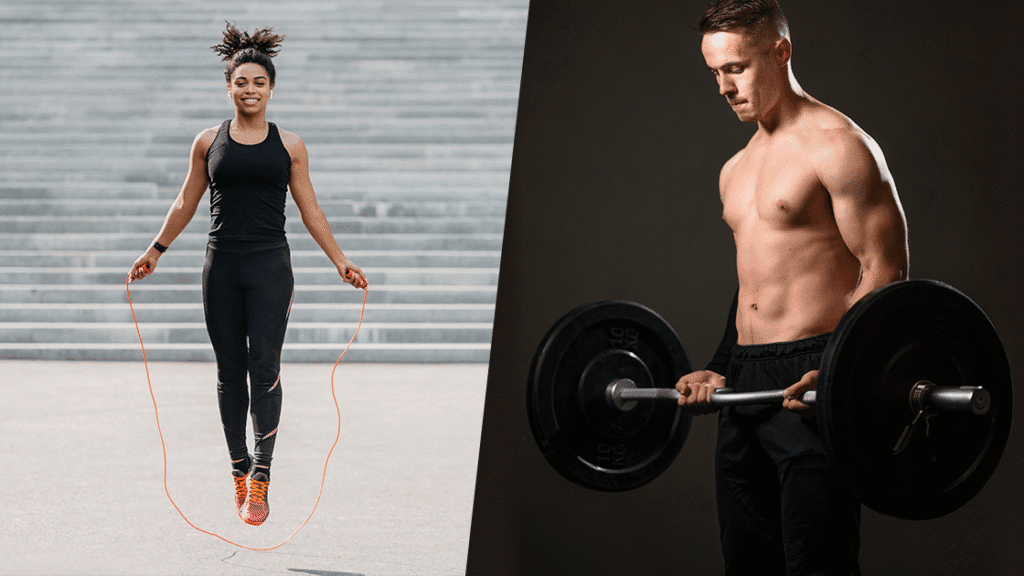
The optimal exercise prescription following laser lipolysis incorporates both cardiovascular and resistance training modalities for comprehensive results. Low-intensity steady-state cardio promotes lymphatic drainage and enhances metabolite clearance from treated areas without excessive inflammatory stress. High-intensity interval training (HIIT) maximizes EPOC effects and promotes growth hormone release, supporting both fat loss and muscle preservation. Resistance training becomes crucial for maintaining muscle mass during fat loss phases and improving overall body composition. Progressive overload principles ensure continued adaptation and prevent metabolic slowdown commonly associated with prolonged caloric restriction.
3.3 Why Muscle Mass Matters for Long-Term Body Composition
Skeletal muscle tissue serves as the primary determinant of resting metabolic rate, with each pound of muscle burning approximately 6-7 calories per day at rest. Muscle protein synthesis requires significant energy expenditure, contributing to overall caloric demand and fat utilization. Higher muscle mass improves glucose disposal and insulin sensitivity, creating a metabolic environment less conducive to fat storage. Additionally, increased muscle mass enhances functional capacity and exercise performance, enabling more intensive training sessions and greater energy expenditure. The thermic effect of physical activity increases proportionally with muscle mass, amplifying the metabolic benefits of regular exercise participation.
3.4 Consistency Over Intensity: The Role of Habit in Body Sculpting
Sustainable body transformation relies more heavily on consistent moderate activity than sporadic high-intensity efforts. Habit formation through repetitive behavior patterns creates neural pathways that support long-term adherence to exercise routines. Moderate-intensity exercise demonstrates superior sustainability rates and lower injury risk compared to excessive training protocols. Regular physical activity maintains elevated metabolic efficiency and prevents adaptive thermogenesis that can impair fat loss progress. Furthermore, consistent exercise supports psychological well-being and stress management, addressing emotional factors that often contribute to weight regain and poor lifestyle choices.
4. The Synergy: Why Laser + Exercise Is the Ultimate Combo
The combination of laser lipolysis and structured exercise creates synergistic effects that exceed the benefits of either intervention alone. This integrated approach addresses multiple aspects of body composition optimization simultaneously.
4.1 Faster Visible Results with Combined Strategy
Laser lipolysis provides immediate structural changes to adipose tissue, while exercise accelerates the clearance of released lipids and metabolites. The enhanced lymphatic flow induced by physical activity expedites the removal of damaged fat cells, leading to more rapid visible improvements. Exercise-induced muscle pump mechanisms improve circulation in treated areas, promoting tissue healing and reducing post-treatment inflammation. Additionally, the psychological benefits of seeing quicker results enhance motivation and adherence to long-term lifestyle modifications. The combined approach typically demonstrates measurable improvements within 2-4 weeks compared to 6-8 weeks for either treatment alone.
4.2 Maintaining Fat Loss Post-Lipolysis with Active Lifestyle
Long-term maintenance of laser lipolysis results requires ongoing metabolic support through regular physical activity. Exercise prevents compensatory increases in appetite-regulating hormones like ghrelin that can promote weight regain following fat loss interventions. Regular cardiovascular activity maintains elevated metabolic rate and promotes continued fat oxidation in both treated and untreated areas. Resistance training preserves lean muscle mass during periods of caloric restriction, preventing metabolic slowdown. Furthermore, the stress-reduction benefits of exercise help regulate cortisol levels, minimizing stress-induced fat accumulation that could compromise treatment results.
4.3 How Laser Lipolysis with Exercise Improves Skin Tightness and Muscle Tone
The thermal effects of laser treatment stimulate neocollagenesis and elastin production, while exercise promotes blood flow and nutrient delivery to support tissue remodeling. Progressive resistance training creates mechanical tension that stimulates muscle protein synthesis and hypertrophy in areas adjacent to laser-treated regions. Improved circulation from regular exercise enhances oxygen and nutrient delivery to healing tissues, optimizing the skin-tightening response. The combination also promotes better fascial mobility and reduces adherence between tissue layers, contributing to improved aesthetic outcomes. Enhanced muscle tone from exercise provides structural support for tightened skin, creating more defined and sculpted contours.
4.4 Reducing the Risk of Fat Reaccumulation
Exercise-induced metabolic adaptations create an environment less conducive to fat storage through improved insulin sensitivity and enhanced fat oxidation capacity. Regular physical activity helps maintain elevated levels of fat-burning enzymes and mitochondrial density, supporting continued metabolic efficiency. The muscle-building effects of resistance training increase overall energy expenditure and create a metabolic buffer against future fat gain. Additionally, exercise helps regulate appetite and satiety hormones, supporting appropriate caloric intake for weight maintenance. The lifestyle habits developed through consistent exercise participation often extend to other health behaviors, creating a comprehensive approach to long-term weight management.
5. Expert Recommendations: Building a Smart Plan
Developing an effective integration strategy requires careful consideration of treatment timing, exercise selection, and supporting lifestyle factors. Evidence-based recommendations ensure optimal outcomes while minimizing potential complications.
5.1 Timing Exercise Around Your Laser Sessions
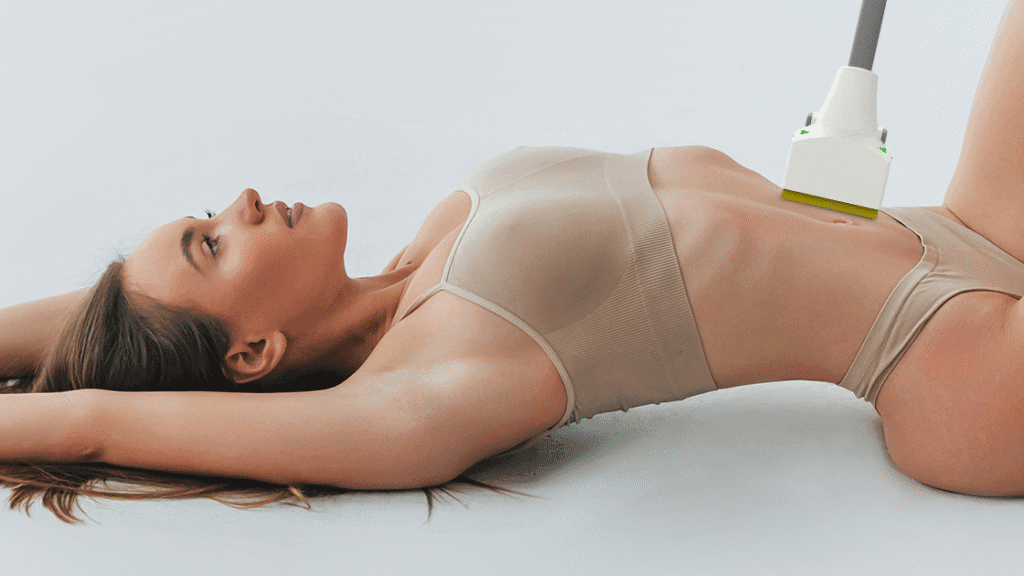
Post-treatment exercise timing requires balancing therapeutic benefits with tissue healing considerations. Light walking and gentle stretching can begin immediately post-treatment to promote lymphatic drainage and reduce inflammation. Moderate cardiovascular activity should resume 24-48 hours after treatment, focusing on activities that promote circulation without excessive impact. Resistance training can typically resume 48-72 hours post-treatment, starting with lighter loads and gradually progressing. High-intensity exercise should be delayed 3-5 days to allow initial healing and minimize inflammatory stress. Hydration becomes particularly important during this period to support metabolite clearance and tissue recovery.
5.2 How Many Sessions Do You Need? Depends on Activity Level
Treatment frequency and total session requirements vary significantly based on individual activity levels and metabolic factors. Sedentary individuals typically require 6-8 sessions spaced 2-3 weeks apart to achieve optimal results due to slower metabolite clearance. Moderately active patients often achieve similar outcomes with 4-6 sessions, benefiting from enhanced lymphatic flow and metabolic efficiency. Highly active individuals may require only 3-4 sessions due to superior circulation, muscle mass, and metabolic adaptation. Regular exercisers also demonstrate better treatment tolerance and faster recovery between sessions. The maintenance phase may require periodic touch-up sessions depending on lifestyle factors and genetic predisposition.
5.3 Best Exercises for Laser-Treated Zones (Core, Arms, Glutes)
Targeted exercise selection should complement laser treatment areas while addressing functional movement patterns and aesthetic goals. Core-focused exercises like planks, dead bugs, and rotational movements enhance deep stabilizing muscle activation and improve overall trunk stability. Upper extremity training should emphasize compound movements like push-ups, pull-ups, and overhead pressing to develop functional strength and muscle definition. Lower body exercises including squats, lunges, and hip hinge patterns promote glute activation and overall leg development. Functional movement training improves coordination and movement quality while supporting the aesthetic improvements achieved through laser treatment.
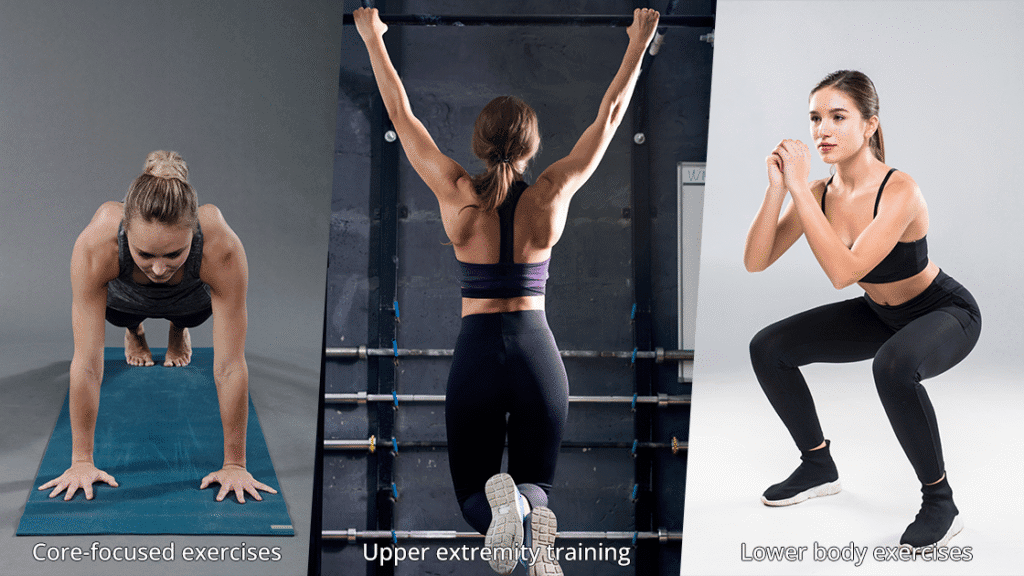
5.4 Hydration, Diet, and Sleep: Supporting Factors in Results
Adequate hydration supports lymphatic function and metabolite clearance, with recommendations of 0.5-1 ounce per pound of body weight daily. Anti-inflammatory nutrition emphasizing omega-3 fatty acids, antioxidants, and lean proteins supports tissue healing and metabolic optimization. Sleep quality directly impacts growth hormone release, cortisol regulation, and appetite control hormones that influence treatment outcomes. Stress management through meditation, yoga, or other relaxation techniques helps regulate inflammatory markers that could impair healing. Supplement considerations may include omega-3 fatty acids, vitamin D, and magnesium to support anti-inflammatory processes and muscle recovery.
6. Common Questions & Concerns
Addressing frequent patient concerns and misconceptions helps establish realistic expectations and promote informed decision-making regarding treatment options.
6.1 Can You Just Work Out Without Laser Fat Removal?
Exercise alone can achieve significant fat loss and body composition improvements through caloric expenditure and metabolic optimization. However, certain areas of stubborn fat may resist traditional diet and exercise interventions due to genetic factors, hormonal influences, or regional blood flow patterns. Alpha-2 adrenergic receptors in stubborn fat areas can inhibit lipolysis, making these regions particularly challenging to address through exercise alone. Additionally, spot reduction through targeted exercise remains physiologically impossible, as fat loss occurs systemically rather than locally. While exercise provides numerous health benefits beyond aesthetics, some individuals may require additional interventions to achieve specific contouring goals in resistant areas.
6.2 Will Laser Lipolysis Replace the Gym?
Laser lipolysis serves as a body contouring tool rather than a replacement for regular physical activity and its associated health benefits. Exercise provides cardiovascular conditioning, muscle development, bone density maintenance, and psychological benefits that cannot be replicated through aesthetic procedures alone. The metabolic adaptations induced by regular exercise are essential for maintaining laser lipolysis results and preventing future fat accumulation. Additionally, exercise addresses functional movement patterns, strength, and endurance that contribute to overall quality of life. Laser treatment should be viewed as a complement to, rather than substitute for, a comprehensive fitness and wellness program.
6.3 Is It Safe to Exercise After Every Session?
Noninvasive laser lipolysis demonstrates an excellent safety profile and is typically well-tolerated, allowing for relatively quick return to physical activity. Light movement and walking immediately post-treatment can actually enhance treatment outcomes by promoting lymphatic drainage. However, high-intensity exercise should be temporarily modified to allow for proper tissue healing and minimize inflammatory response. Individual tolerance varies based on treatment intensity, personal fitness level, and tissue sensitivity. Monitoring for signs of excessive inflammation, pain, or delayed healing helps guide appropriate exercise progression. Communication with treatment providers ensures personalized recommendations based on specific treatment protocols and individual response patterns.
6.4 What If You Stop Exercising After Treatment?
Cessation of regular exercise following laser lipolysis can compromise long-term results through several physiological mechanisms. Metabolic rate decreases due to reduced muscle mass and training adaptations, creating conditions favorable to fat regain. The slimming and tightening effects can diminish if weight is regained following treatment. Insulin sensitivity decreases with physical inactivity, promoting preferential fat storage over muscle glycogen replenishment. Additionally, the psychological and stress-management benefits of exercise are lost, potentially leading to emotional eating and poor lifestyle choices. Maintaining at least moderate activity levels helps preserve treatment results and supports overall health and well-being long-term.
7. Real-Life Results: Case Studies and Testimonials
Clinical case studies and patient feedback highlight the real-world success of combining laser lipolysis with structured exercise. Aesthetic clinics report improved outcomes—such as a 35-year-old woman who reduced 4–6 inches in her waistline and 15% body fat over 12 weeks, alongside better skin elasticity. Patients often describe laser lipolysis as a motivating “jumpstart,” helping them adopt consistent fitness habits. Long-term follow-ups show that those who continue exercising maintain their results more effectively than sedentary individuals. Photos confirm that pairing resistance training with laser treatments enhances muscle tone and contour, especially in areas like the abdomen. Those combining cardio and strength training experience more balanced, sculpted physiques than those relying on cardio alone. Together, laser lipolysis and exercise offer a synergistic, sustainable path to body transformation.
8. Final Take: Building Your Dream Body Takes Two
Sustainable body transformation requires a multifaceted approach that addresses both immediate aesthetic goals and long-term metabolic health. The integration of advanced technology with proven lifestyle interventions creates optimal conditions for lasting success.
8.1 Lipolysis Accelerates, Exercise Sustains
Laser lipolysis provides rapid initial improvements that can serve as powerful motivation for long-term lifestyle changes. The immediate visible results help patients overcome psychological barriers and establish positive momentum toward their goals. However, the long-term success depends entirely on maintaining metabolic support through regular physical activity. Exercise creates the physiological environment necessary to preserve treatment results and prevent compensatory fat accumulation. The combination leverages the strengths of each approach while minimizing individual limitations, creating a comprehensive solution for body transformation.
8.2 Long-Term Fat Loss Strategy: Build, Don’t Just Burn
Effective body composition management focuses on building metabolically active tissue rather than simply eliminating fat stores. Muscle development through resistance training provides ongoing metabolic benefits that support fat loss maintenance. The thermal effect of muscle protein synthesis and increased resting metabolic rate create sustainable caloric deficits. Additionally, improved insulin sensitivity and glucose disposal prevent the metabolic adaptations that often lead to weight regain. This building approach creates lasting changes in body composition that extend far beyond the immediate effects of laser treatment.
8.3 Consultation Is Key: Talk to Experts Before You Start
Professional guidance ensures appropriate treatment selection, realistic goal setting, and optimal integration of laser and exercise interventions. Qualified practitioners can assess individual factors including medical history, current fitness level, and aesthetic goals to develop personalized treatment plans. Understanding potential risks, expected outcomes, and maintenance requirements helps patients make informed decisions about their body transformation journey. Regular monitoring and program adjustments based on individual response optimize results while minimizing complications. The investment in professional consultation pays dividends in terms of safety, efficacy, and long-term satisfaction with treatment outcomes.
